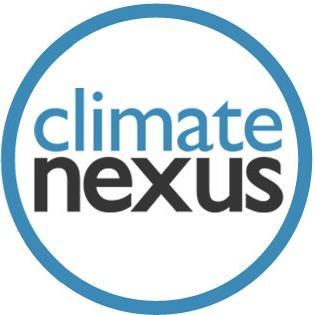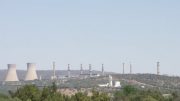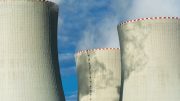Aging nuclear plants that cannot compete with low-cost energy sources are closing around the country. In some cases, states are subsidizing them in a bid to save jobs, avoid increasing emissions and protect local sources of tax revenue. As more nuclear plants become uncompetitive, more states will face this decision on the fuel source that the country relies on for about one fifth of its electricity, its largest low-emissions energy source.
Why U.S. Nuclear Plants Are Closing
Nuclear power is increasingly uncompetitive with low-cost natural gas and renewable energy, coupled with flat electricity demand due to decreasing overall energy consumption. A significant regulatory restructuring of the electricity industry over the last 20 years introduced more competition between sources in wholesale electricity markets. New, cheaper sources of energy drove down prices and made nuclear energy less economically competitive.
Natural gas and renewables have replaced most of the generating capacity of the six nuclear plants that have closed since 2013:
- New Jersey’s Oyster Creek Nuclear Generating Station, the oldest in the U.S., shut down on September 17, 2018. The state is planning to replace some of the lost capacity with offshore wind projects.
- The Vermont Yankee nuclear plant closure in 2014 resulted in an increase in natural gas generation and some imported hydropower from Canada.
- After closing the San Onofre Nuclear Generating Station in California in 2013, the utilities Southern California Edison and San Diego Gas & Electric procured up to 1,500 megawatts of new generating capacity (including renewables, efficiency and natural gas) through 2022.
- The 2013 closing of the Kewaunee nuclear plant in Wisconsin prompted utilities to burn more fossil fuels.
- Duke Energy closed the Crystal River nuclear plant in Florida in 2013 due to the high cost of renovation, replacing most capacity with natural gas.
- Fort Calhoun in Nebraska, the most recent nuclear plant to close in the U.S., shut down operations in 2016 largely because of abundant wind and natural gas in the area.
Nine more nuclear plants have announced retirement dates over the next ten years: Pilgrim in Massachusetts and Three Mile Island in Pennsylvania by 2019; Duane Arnold in Iowa and Davis-Besse in Ohio by 2020; Indian Point in New York, Beaver Valley in Pennsylvania, and Perry in Ohio by 2021; Palisades in Michigan by 2022; and Diablo Canyon in California by 2024-2025.
Some companies are calling for state or federal bailouts to save their nuclear plants from closing. FirstEnergy — owner of the Davis-Besse, Beaver Valley, and Perry plants — has asked the Department of Energy to use emergency powers to direct a bailout that would keep the unprofitable plants open. Mid-Atlantic grid operator PJM has said the retirement of FirstEnergy’s plants will not threaten reliability and does not constitute an emergency. In Pennsylvania, Exelon is seeking state support to delay retirement of the Three Mile Island plant.
All fifteen of these plants (six that have closed since 2013 and nine that plan to retire between 2019 and 2025) total just over eighteen gigawatts of generation, representing approximately eighteen percent of total U.S. nuclear capacity.
Policies Affecting the Future of Nuclear
Climate policies mandating emissions reductions are also having an impact on the future of nuclear power. Federal emissions policy is in flux, as the Trump administration has proposed a new rule to replace the Clean Power Plan. However, several states have enacted policies that shape the role of nuclear in their electricity mix:
- In May 2018, New Jersey lawmakers passed a nuclear power subsidy for the state’s struggling Salem and Hope Creek nuclear plants, which would otherwise close due to competition from low natural gas prices. The subsidy was passed in tandem with a bill that requires 50 percent of the state’s power to come from renewable sources by 2030, including plans to build a 3,500 MW of offshore wind, 2,000 MW of energy storage, and implement energy efficiency programs.
- New York, which has committed to produce 50 percent of its power from renewables by 2030, is keeping three upstate nuclear plants open in part because if it allowed them to retire wind and solar power might not be able to scale up fast enough to replace the lost nuclear capacity, leaving a void that could be filled by natural gas. The subsidies will total $7.6 billion over 12 years.
- California will close Diablo Canyon, its last remaining nuclear power plant, by 2025. The plant provides about 9 percent of California’s electricity, but is losing revenue due to the rapid growth of gas and renewables. The decommissioning bill includes a commitment to not increase greenhouse gas emissions as a result of the planned closure of the 2,250 MW plant.
- Illinois passed a sweeping energy bill in December 2016 that includes $235 million annually for ten years in financial support for two nuclear power plants that were at risk of closing. Exelon, the owner of the Clinton and Quad Cities nuclear plants, warned regulators of the potential relocation of 1,500 jobs out of state should the plants close.
The Future of the U.S. Nuclear Fleet
Status of three plants in different phases of construction:
- As of fall 2018, who would ultimately pay for the failed project was still being determined and an initial settlement between SCANA and South Carolina customers hinged on another judge ruling as well as final approval of the Dominion-SCANA merger.
- Georgia’s Vogtle Nuclear Plant is the only nuclear facility currently under construction in the U.S. and has continued despite controversy surrounding the failed V.C. Summer plant in neighboring South Carolina and delays caused by the Westinghouse bankruptcy. The plant, expected to be complete in 2021-22, will cost a total of $27 billion. In September 2018 the owners of the project agreed to continue construction, despite the fact that the plant will cost $2.3 billion more than expected.
- Duke Energy said in August 2017 it would not build the Levy County Nuclear Plant in Florida. Duke also announced $6 billion in clean energy and grid modernization investments as part of the same agreement. Duke never began construction on the plant, but the falling cost of natural gas made the company fear it would never recuperate its investment in the nuclear plant.
November 27, 2018
Originally published by Climate Nexus.org




